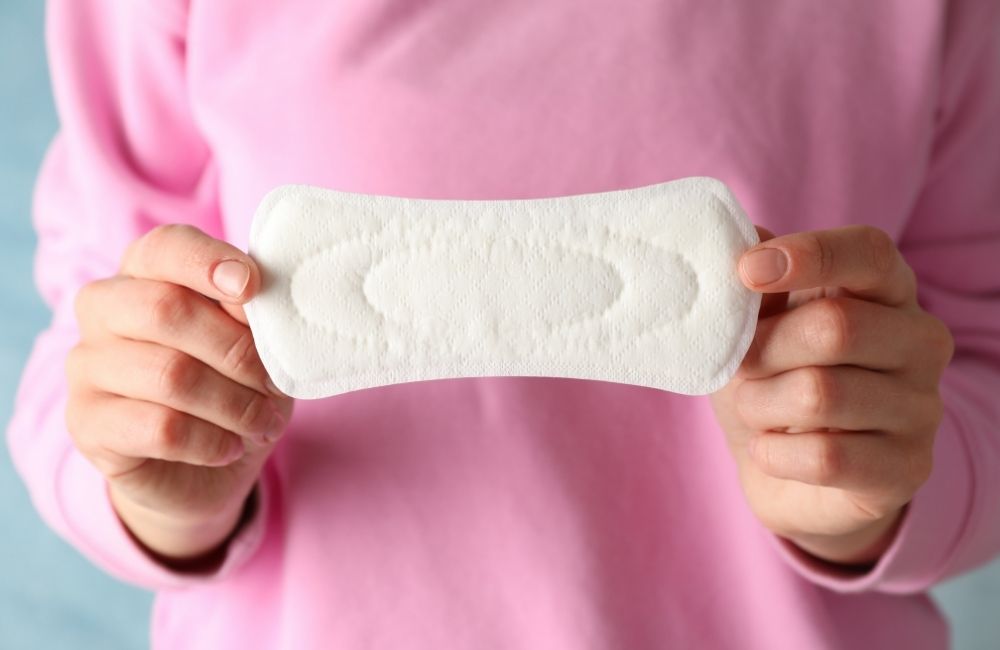Are you concerned about the risk of toxic shock syndrome (TSS) while using pads during your period? It’s a common question that many women have, and it’s important to understand the facts. Today, we’ll explore the relationship between pads and TSS to give you a clear understanding of the risks involved. We’ll also address common misconceptions and provide practical tips to help minimize the risk of TSS while using pads.

Contents
Do Pads Cause Toxic Shock Syndrome?
Yes, pads can cause toxic shock syndrome (TSS). While the risk is lower compared to tampons, it’s still important to be aware of the potential dangers. It’s crucial to understand that TSS is caused by bacteria, specifically Staphylococcus aureus, and not by the menstrual product itself. In the 1980s, highly absorbent tampons were associated with TSS and were promptly removed from the market. However, TSS can occur with any menstrual product, including pads.
Factors That Can Increase the Risk
Several factors can increase the risk of developing TSS while using pads:
- Bacteria: TSS is caused by bacteria, and certain strains, such as Staphylococcus aureus, can lead to the condition. It’s important to maintain good hygiene and practice effective intimate care to minimize the chances of bacterial infections.
- Prolonged Use: Leaving a pad on for an extended period can create the perfect environment for bacteria to thrive. It’s essential to change pads regularly to reduce the risk of infection.
- Intimate Care Practices: Maintaining good intimate care practices can help prevent TSS. This includes washing your hands before and after changing pads and ensuring that you clean your genital area properly. Avoid using harsh soaps or douches, as they can disrupt the natural balance of bacteria and increase the risk of infection.
- Menstrual Flow: Heavy menstrual flow can increase the risk of TSS. If you have a heavier flow, opt for higher absorbency pads that can handle your needs without compromising your safety.
Other Factors to Consider
Frequency of Pad Changes
One important factor to consider when using pads is the frequency of pad changes. While pads are generally considered safe in terms of toxic shock syndrome (TSS), it is still important to change your pad regularly to maintain good intimate hygiene and minimize the risk of any potential infections.
Changing your pad every few hours or whenever it becomes full is a good rule of thumb. This not only helps prevent leakage, but also ensures that any bacteria or other microorganisms are not left on the pad for an extended period of time. It’s crucial to remember that TSS is caused by bacteria, so practicing good hygiene by changing your pad frequently is essential.
Material and Design of Pads
Over the years, the sanitary pad industry has made significant advancements in terms of materials and design. Today, pads are more comfortable and practical than ever before, thanks to the invention of absorbent materials and better designs.
The use of materials like cotton and other soft fabrics helps provide a comfortable and breathable experience. Additionally, the invention of “wings” has greatly improved pad stability by keeping them securely in place in your underwear.
When selecting pads, it’s important to choose ones that are made from high-quality materials that prioritize your comfort and protection. Always opt for pads that have been rigorously tested for safety and effectiveness.
It’s worth noting that some pads may be scented to reduce odors. While this may be a personal preference, it’s important to be aware that these scented pads may contain additional ingredients which could potentially cause irritation for some individuals. If you have sensitive skin or have experienced any reactions to scented products in the past, it may be best to opt for unscented pads.
Prevention and Awareness

Educating Women About the Risks
It is crucial to educate women about the potential risks of toxic shock syndrome (TSS) and how it relates to the use of menstrual pads. Although TSS is commonly associated with tampons, it’s important to note that it can occur with any menstrual product, including pads. By understanding the risks, women can take necessary precautions and make informed choices about their menstrual care.
Using Alternatives to Tampons and Pads
While pads are a popular option for menstrual care, it’s good to explore alternatives to minimize the risk of TSS. Consider the following options:
- Menstrual Cups: Menstrual cups, made of medical-grade silicone or rubber, collect menstrual flow instead of absorbing it. They have gained popularity due to their reusability and lower risk of TSS. Remember to empty and clean the cup regularly to reduce the risk of bacteria growth.
- Period Underwear: Designed with built-in absorbent layers, period underwear provides leakage protection without the risk of TSS. They are eco-friendly, comfortable, and can be worn for up to 12 hours depending on your flow. It’s worth considering this option if you’re concerned about TSS.
- Reusable Pads: Fabric pads that can be washed and reused are another alternative to tampons and pads. They offer a sustainable and TSS-free option for menstrual care. Just like with disposable pads, remember to change them regularly to maintain good intimate hygiene.
By exploring these alternatives, you can still effectively manage your menstruation while minimizing the risk of TSS. It’s important to find the option that suits your comfort, lifestyle, and preferences.
Frequently Asked Questions
How likely is it to get TSS from a pad?
TSS can occur with any menstrual product, including pads or menstrual cups. Even men and children can get TSS, and only about half of TSS infections are related to menstruation.
What is the most common cause of toxic shock syndrome?
TSS often results from toxins produced by Staphylococcus aureus (staph) bacteria. It can also be caused by toxins produced by group A streptococcus (strep) bacteria.
How quickly does TSS progress?
Within 1-2 days, TSS symptoms can rapidly progress to include a sunburn-like rash, low blood pressure, watery diarrhea, decreased urine output, swelling, and confusion.
Can you get toxic shock syndrome easily?
TSS is a rare but serious condition that can come from an infected cut, burn, or from using tampons. Bacteria spread toxins through your bloodstream, causing damage and even death. TSS comes on suddenly like the flu and worsens quickly.
I am a medical student with experience and interest in Women’s health and well-being.